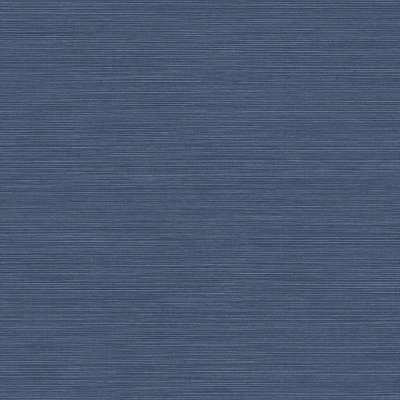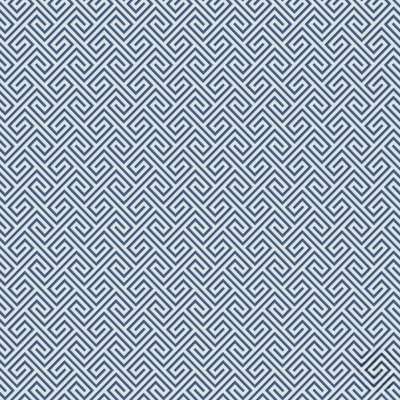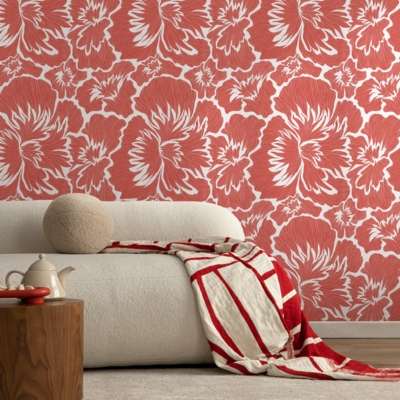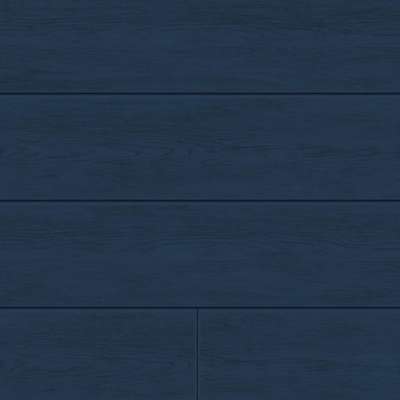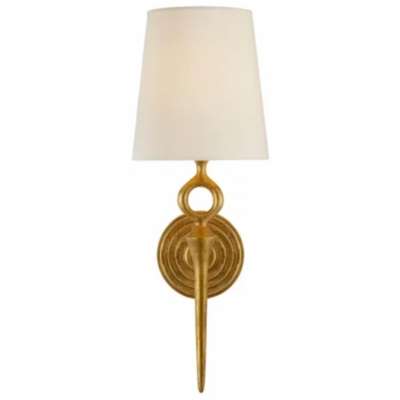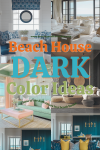Okay, let’s talk about something really important: the myth that dark colors don’t belong in a beach house. Seriously, who came up with that?! I’m Darlene, your coastal chic design BFF, and I’m here to tell you that’s just plain wrong. In fact, I’d argue that the right touch of dark hues can be the secret ingredient to taking your breezy beach vibe from “meh” to magnificent. Whether you’re channeling coastal Florida charm or West Coast cool, adding some visual depth with darker shades can change the game.
Think about it: a beach house is all about light and airy, right? But sometimes, too much of a good thing can feel…well, a little too light. Like a cloud floating away without an anchor. That’s where dark colors come in. They’re the grounding force that balances all that beautiful brightness. They add contrast, drama, and a touch of sophisticated mystery. Plus, let’s be real, who doesn’t love a little drama?
Table of Contents
Don’t have time to read it now? Pin it for later!
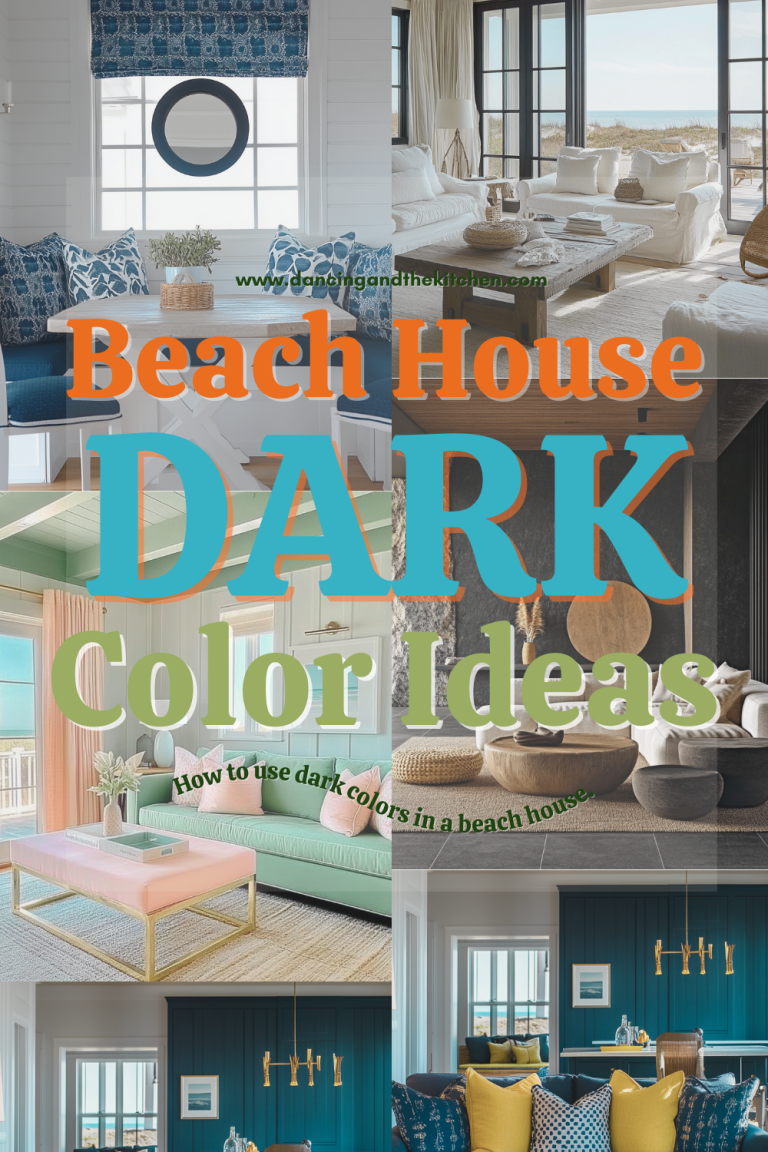
Why Dark Colors Actually Work in a Beach House (And It’s Not Just Because I Said So)
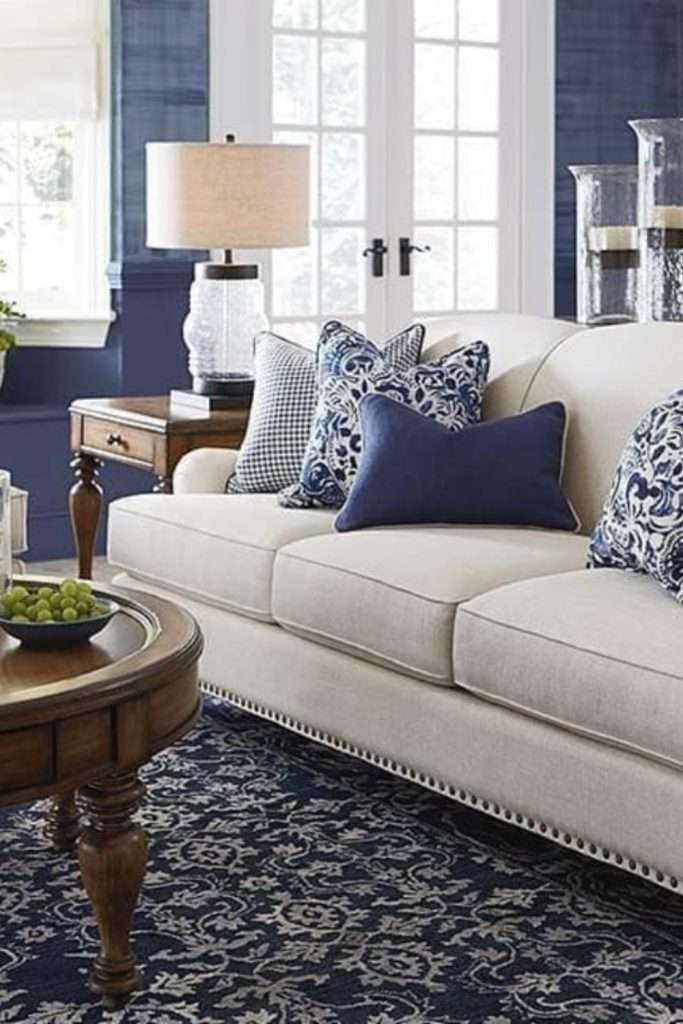
Okay, let’s dive deeper into why dark colors actually work in a beach house. I’m not just saying they do – there’s real design logic behind it, and I want you to understand it so you can confidently use them in your own home.
Let’s bust this myth once and for all: dark colors don’t automatically make a space feel small or gloomy. It’s all about how you use them.
Contrast is King (or Queen!)
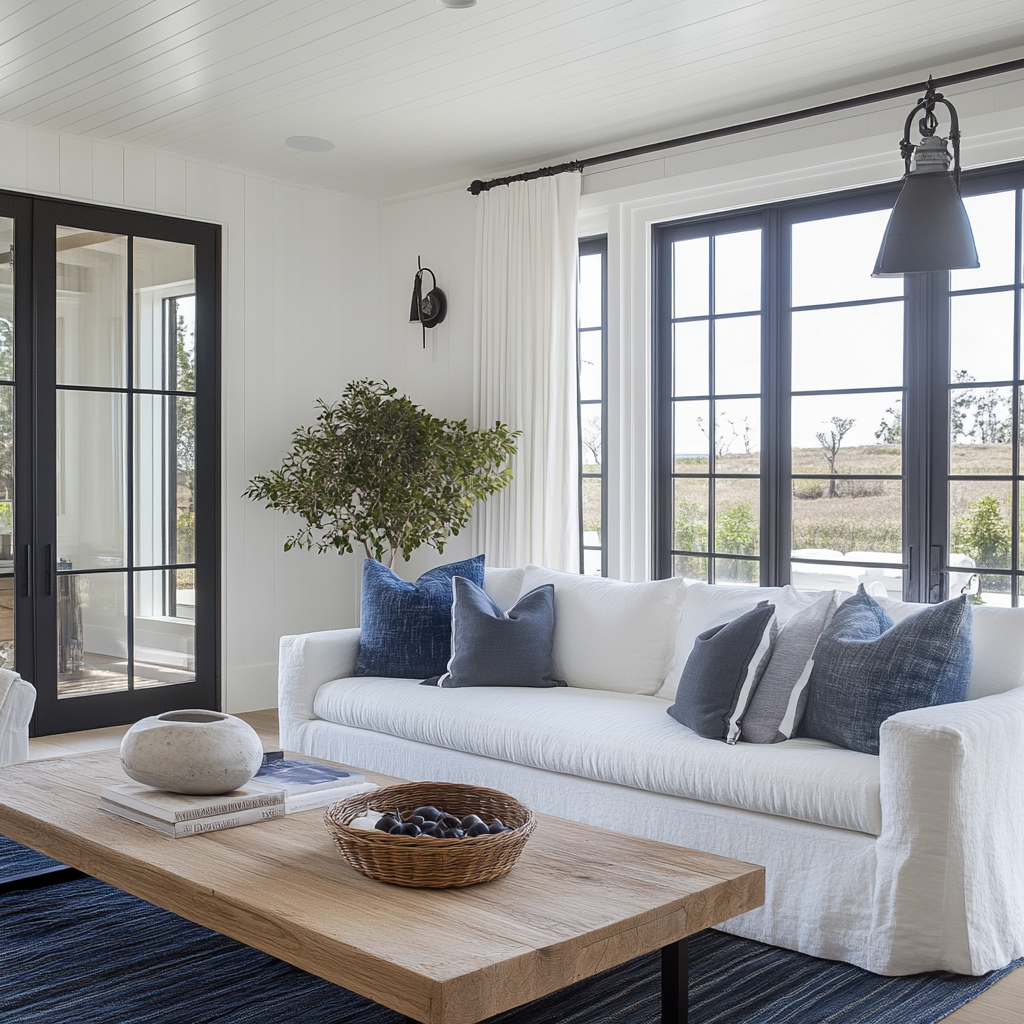
Think of a beach house: bright white walls, light wood floors, airy fabrics. Beautiful, right? But sometimes, it can feel a little too light, almost like it’s missing something. That “something” is contrast. Dark colors provide that essential visual punch.
They create a stunning counterpoint to all the lightness, like adding a bold brushstroke to a watercolor painting. Imagine a crisp white sofa against a deep navy wall – instant drama and sophistication. It’s that interplay of light and dark that makes a space truly interesting.
Grounding Force
Beach houses often have soaring ceilings and open floor plans, which are amazing for creating a sense of spaciousness. But sometimes, all that openness can feel a bit…unmoored. Like you’re floating away in a sea of white. Dark colors act as a grounding force, visually anchoring the space.
They add a sense of cozy intimacy without sacrificing the overall feeling of spaciousness. A dark accent wall, a deep-toned rug, or even dark furniture can create that grounding effect.
Hides Imperfections (Shhh! It’s a Secret)
Honestly, beach houses are lived in. They’re filled with sandy feet, wet swimsuits, and happy memories. And all that living can lead to a little wear and tear. Darker shades are much more forgiving than light ones when it comes to hiding the inevitable scuffs, scratches, and sand that seems to magically appear everywhere.
It’s like the little black dress of interior design – effortlessly chic and incredibly practical. A dark-colored console table in the entryway? Genius. A navy blue rug in the living room? Even better. You get the idea.
How to Use Dark Colors Effectively in Your Beach House (Without Giving Yourself a Headache)
Okay, now for the fun part! Here are my tried-and-true tips for incorporating dark colors like a pro:
1. Balance is Everything (Seriously, Everything)
Let’s talk balance – it’s everything when using dark colors in a beach house. You want sophisticated and inviting, not overwhelming. Here’s the key:
First, your supporting cast: soft, sandy neutrals, crisp white, and warm woods. They let dark hues shine without stealing the show.
Next, proportion: use dark tones strategically, not everywhere. Think statement furniture, rugs, or gallery walls. Feature walls? Yes, but keep them classic, like high-end wallpaper or tongue & groove.
I feel that feature walls have been overused in the past decade, but I do think some spaces can benefit from one, but make it classic design, and make it special. For instance, a focal wall featuring a high-end wallpaper or beautiful tongue & groove vertical panels.
Crucially, consider the light. Natural sunlight is your BFF. Maximize it! It keeps the space bright and airy, even with dark elements. So, in short:
- Subtle Pairings: Sandy neutrals, crisp white, warm woods – your supporting cast.
- Proportion Advice: Dark colors as accents, not the main event.
- Feature Walls: Classic, not trendy. Think high-end wallpaper or tongue & groove.
- Light Matters: Natural sunlight is your BFF. Maximize it!
2. Focus on Statement Walls (But Choose Wisely)
First, the right space: pick a room with lots of natural light, like a living room or bedroom. And make sure it’s a defined space, not part of an open-concept area. You want to create a focal point, not overwhelm the entire house.
Next, color ideas: navy blue, charcoal gray, or a deep, moody green are always great choices. They add drama and sophistication.
Most matte paints aren’t truly easy to clean. I prefer satin. However, if matte is desired, here’s my best pro tip to clean up marks: keep a small paintbrush with the paint color on it – wrap the head of the brush in a ziplock and put it in your freezer.
When you’re ready to spot-clean the wall, defrost the paint and touch up the wall. Cover with ziplock and refreeze. You’re welcome!
So, to recap:
- Space: Well-lit, defined rooms.
- Colors: Navy, charcoal, deep green.
- Finish: Matte or satin.
- Pro Tip: Frozen paint for touch-ups!
3. Dark Cabinets in Kitchens and Bathrooms (A Touch of Drama)
For kitchens, navy or a warm, deep grey are so chic, especially with brass or gold hardware. And a quick word of advice: let’s move on from all-black kitchens, okay? They’re a bit dated now. Instead, keep the dark cabinets to one area and balance them with lighter elements – think white countertops, open shelving, and plenty of natural light.

In bathrooms, a deep-toned vanity or strategically placed dark tiles can create a spa-like retreat. Imagine a navy vanity with crisp white countertops and brass fixtures – pure coastal elegance. Or consider using dark grey tiles in the shower for a touch of drama. The key is to create a sense of balance and avoid making the space feel too dark or cramped.
4. Optimize with Textures and Patterns (The Magic Touch)
Let’s talk textures and patterns – they’re the magic touch when it comes to incorporating dark colors into your beach house. They add depth, interest, and prevent the space from feeling flat.
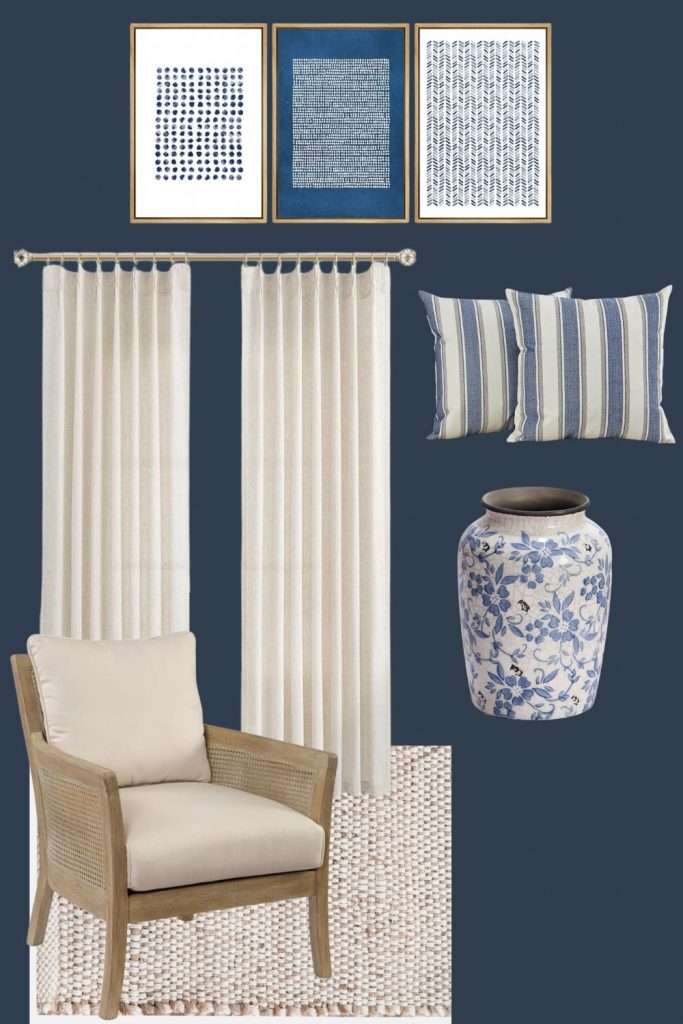
First, layering textures is essential. Think jute rugs, rattan furniture, linen curtains, and maybe even a chunky knit throw. These natural textures create the perfect counterpoint to dark walls, adding warmth and visual interest. Imagine a deep navy wall with a natural fiber rug and a rattan armchair – so chic!
Next, don’t underestimate the power of patterned accents. Striped pillows are a classic coastal choice, but you could also consider geometric artwork, a subtle patterned rug, or even some textured wallpaper.
These patterns add depth and prevent the space from feeling too one-dimensional. Just remember to keep the patterns balanced – you don’t want them to overwhelm the room.
So, to recap:
- Layer Textures: Jute, rattan, linen, chunky knits – think natural and cozy.
- Patterned Accents: Stripes, geometric designs, subtle patterns – add depth and interest.
5. Use Dark Accessories to Bring Depth (The Finishing Flourish)
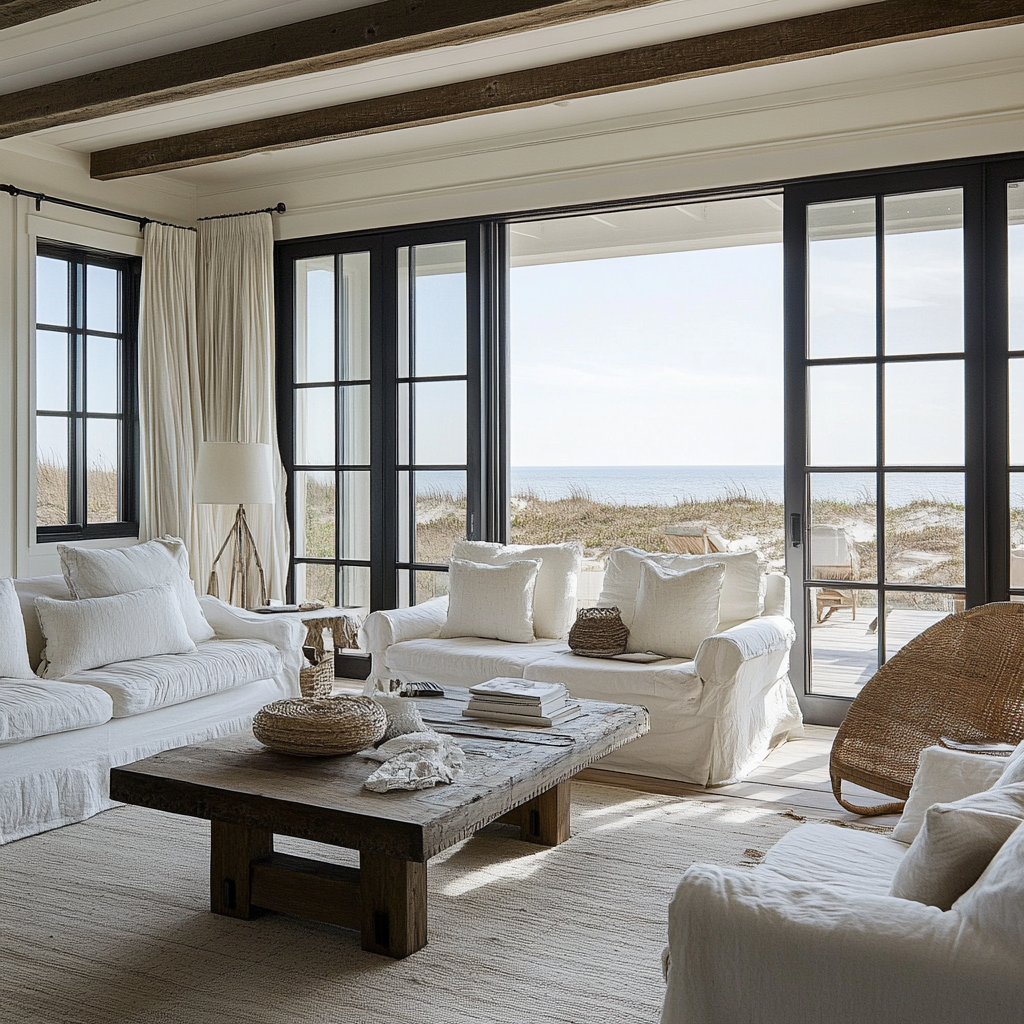
Think about these décor ideas: black-framed mirrors, which add a touch of modern elegance and help bounce light around the room. Navy throw pillows are a classic coastal choice, adding a pop of color and texture.
Deep-toned vases, whether they’re ceramic, glass, or even woven baskets, can add a touch of sophistication. And don’t forget statement lamps! A beautiful lamp can be both functional and a work of art.
Now, here’s the placement tip: scatter these dark elements throughout the house. Don’t just concentrate them in one room. By distributing them evenly, you create a cohesive look and tie all the spaces together.
A black-framed mirror in the entryway, a navy throw pillow in the living room, a deep-toned vase in the dining room – these small touches make a big difference.
Mistakes to Avoid (Because We All Make Them)
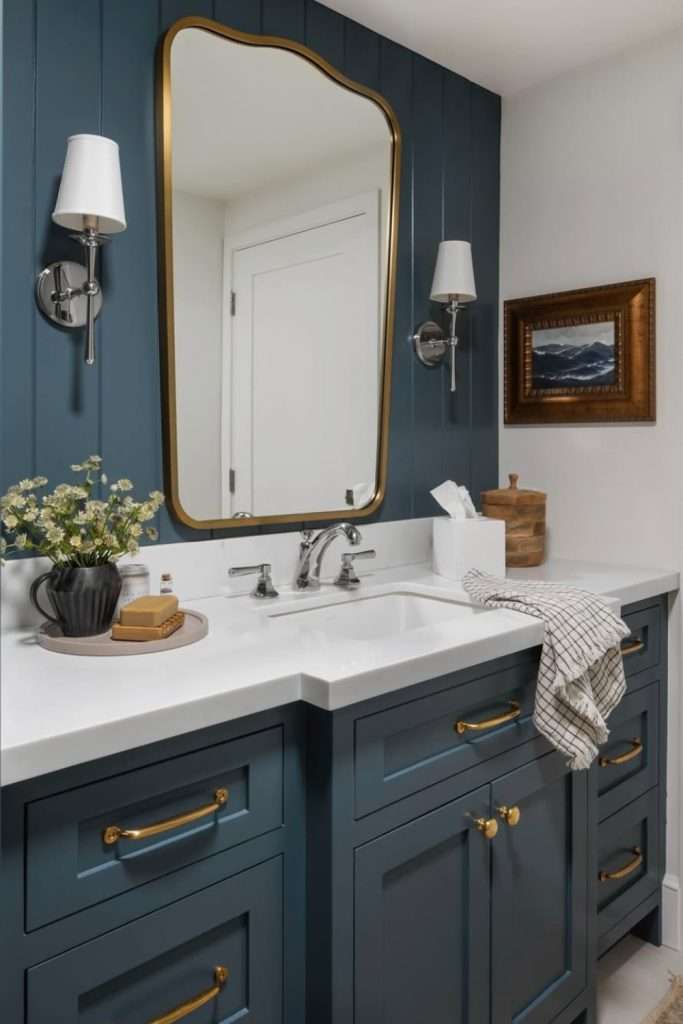
Okay, we’ve talked about all the amazing things dark colors can do for your beach house. But before you grab a paintbrush and go wild, let’s talk about some common mistakes to avoid. Because, hey, we all make them!
- Overdoing It: This is the biggest one. Resist the urge to paint every wall a dramatic dark color. Remember, less is more. Think accents, feature walls, and strategic pops of dark hues. You want to create a sense of balance, not overwhelm the space.
- Ignoring Lighting: Lighting is crucial when working with dark colors. Always, always, always test your paint swatches in both natural and artificial light. Colors can look completely different depending on the light source, and you don't want any surprises. Trust me on this one.
- Skipping Contrast: Remember, the goal is to enhance the breezy beach house vibe, not eliminate it. So, make sure you balance those dark shades with plenty of lighter tones. Think white, cream, beige, and natural wood. This contrast is what keeps the space feeling light, airy, and inviting.
Practical Dark Color Combinations for a Beach House (My Favorites)
Okay, now for some inspiration! Here are a few of my favorite dark color combinations for beach houses:
Navy and White

This is a timeless combination that always looks fresh and chic. Pair it with natural wood accents for a touch of warmth and texture. Think navy walls with white trim, a jute rug, and a rattan armchair.
Charcoal Gray and Warm Beige
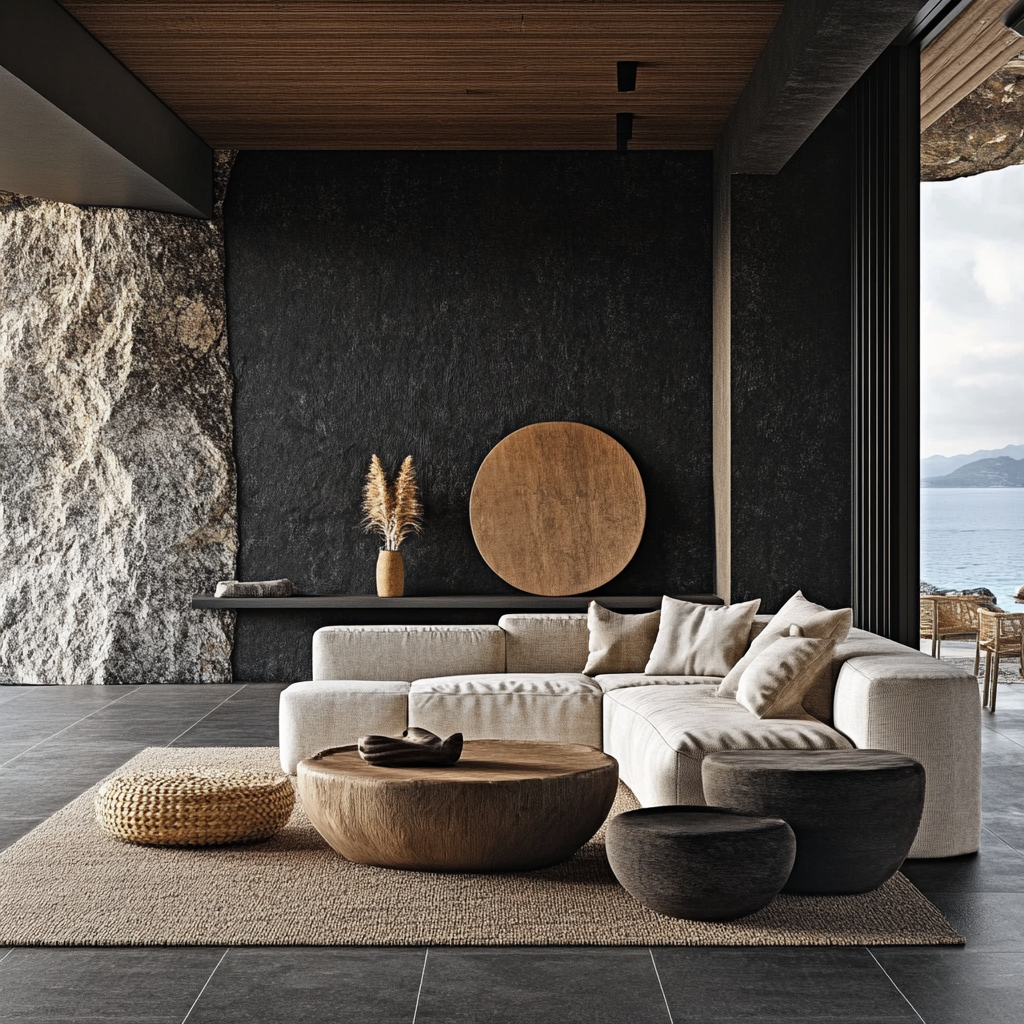
This pairing is a bit more subtle and sophisticated. The warm beige helps to soften the charcoal gray, creating a cozy and inviting atmosphere. Imagine a charcoal gray sofa with beige throw pillows and a natural wood coffee table.
Deep Green and Pastel Coral or Blush
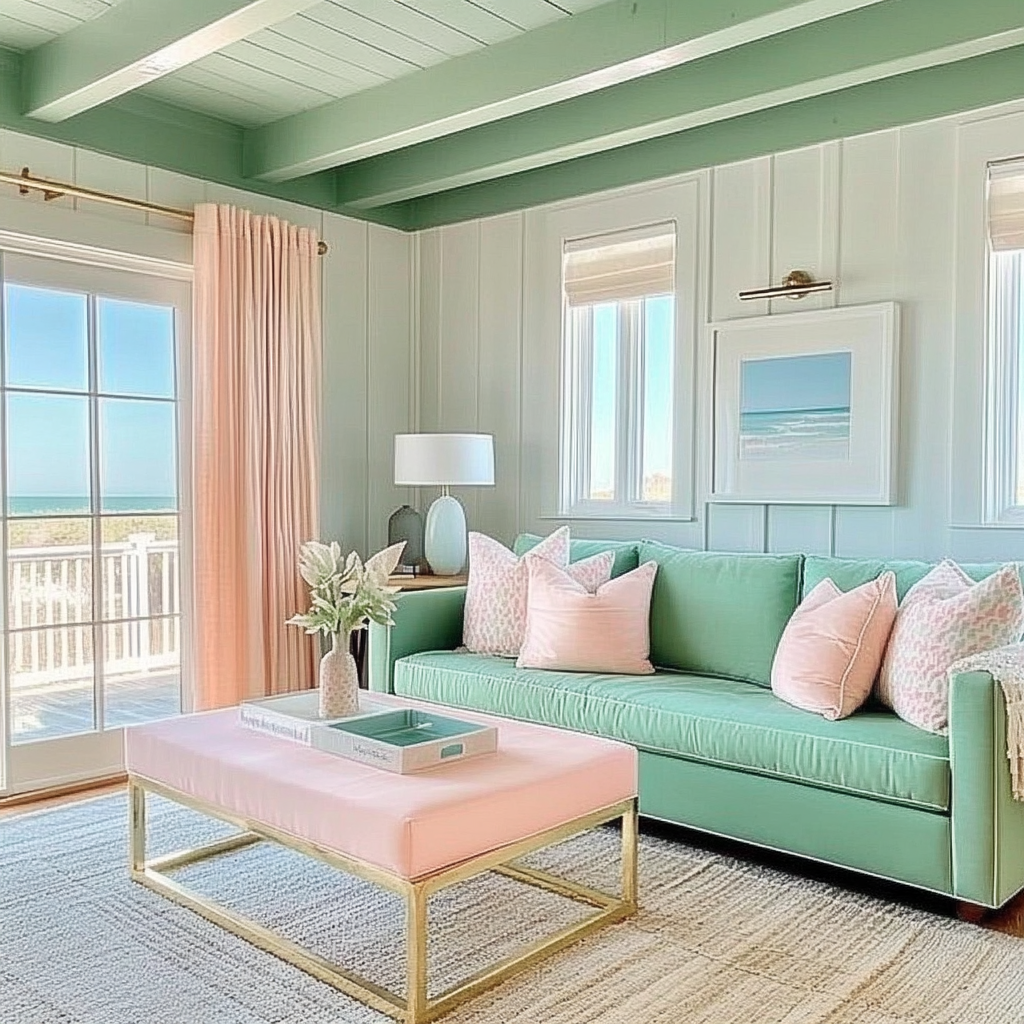
This unexpected combination is perfect for adding a touch of Palm Beach personality to your beach house. The green creates a sense of calm and serenity, while the pastel coral or blush adds a touch of playfulness. Think a deep green accent wall with coral throw pillows and a blush-colored rug.
Unexpected Combos (For the Bold and Adventurous)
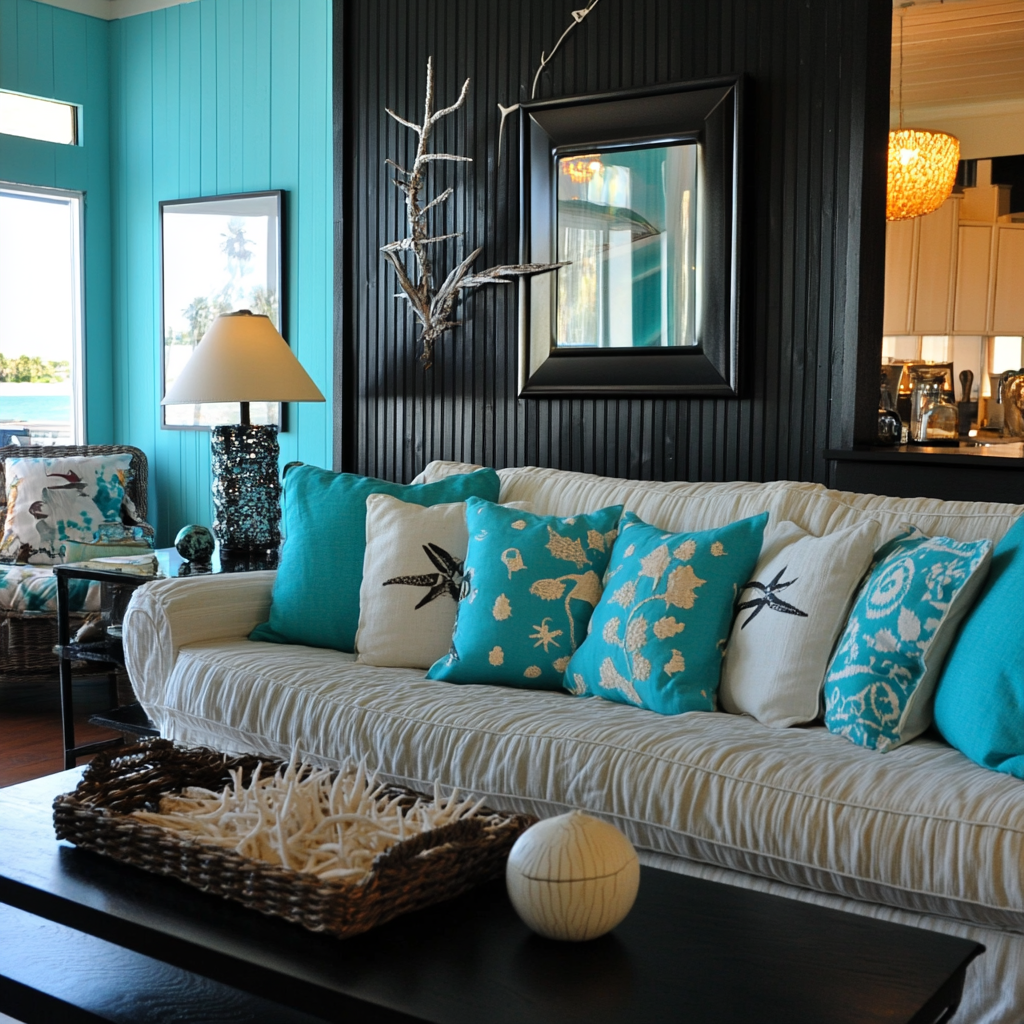
This striking combination is perfect for those who want to make a statement. The black adds drama and sophistication, while the turquoise or teal adds a pop of vibrant color. Imagine a black accent wall with turquoise artwork and teal throw pillows.
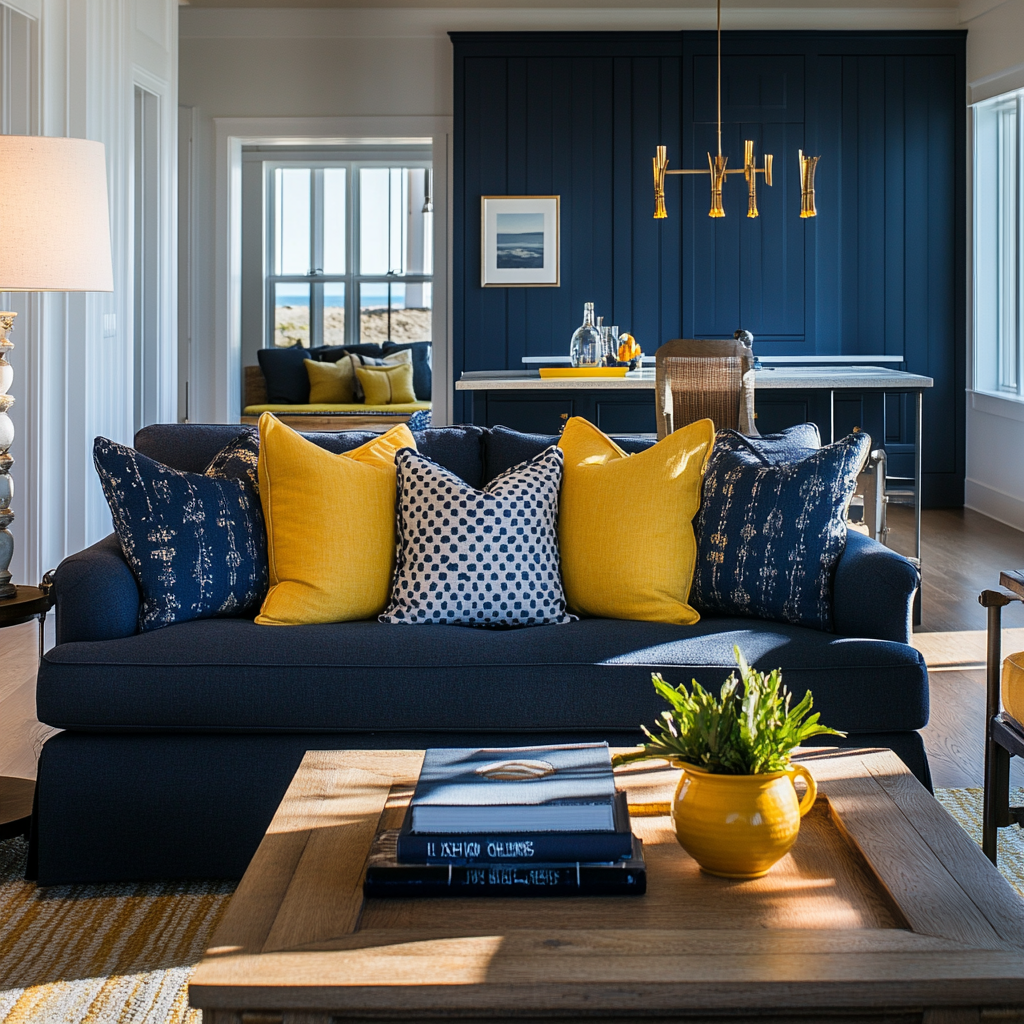
This unexpected pairing is both calming and uplifting. The midnight blue creates a sense of depth and mystery, while the pale yellow adds a touch of sunshine. Think a midnight blue sofa with pale yellow throw pillows and a natural wood coffee table.
Frequently Asked Questions
Navy, charcoal gray, deep green, and even black (used sparingly!).
Focus on one feature wall, balance with light colors, and maximize natural light.
Absolutely! It creates a striking contrast and adds a touch of drama.
Living rooms, bedrooms, and even bathrooms can benefit from a touch of dark.
Balance dark shades with natural textures, light colors, and plenty of natural light.
Let’s Make Some Magic!
Adding dark colors to your beach house might seem a little unconventional, but trust me, it’s worth it. It’s all about balance, texture, and intentional design. From dramatic feature walls to moody accents, darker tones can elevate your coastal retreat and make it truly unforgettable.
Ready to transform your beach house into a coastal chic paradise? Schedule a consultation with me! Let’s create a space that’s both timeless and full of personality. Because your home should be a reflection of you, not just another cookie-cutter beach house.



